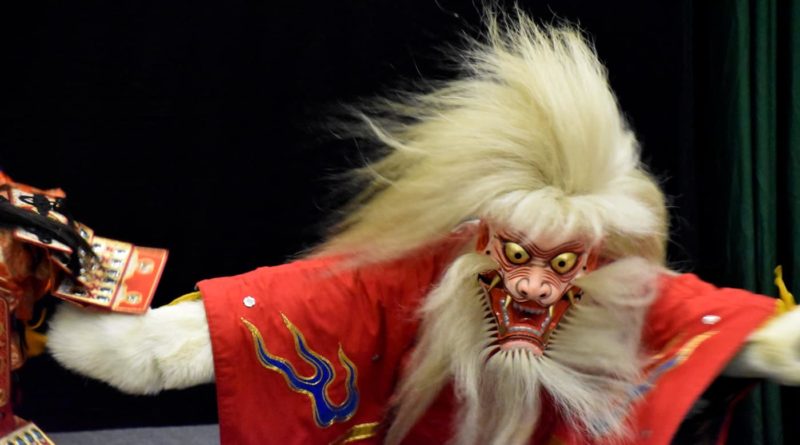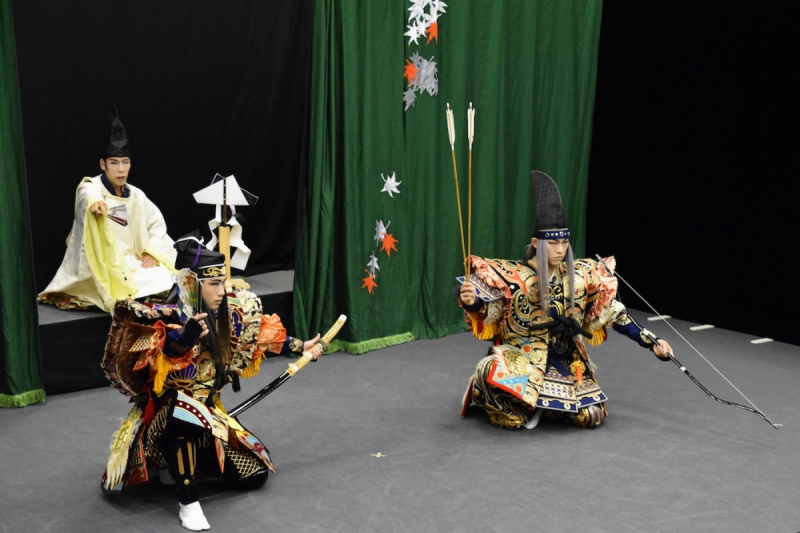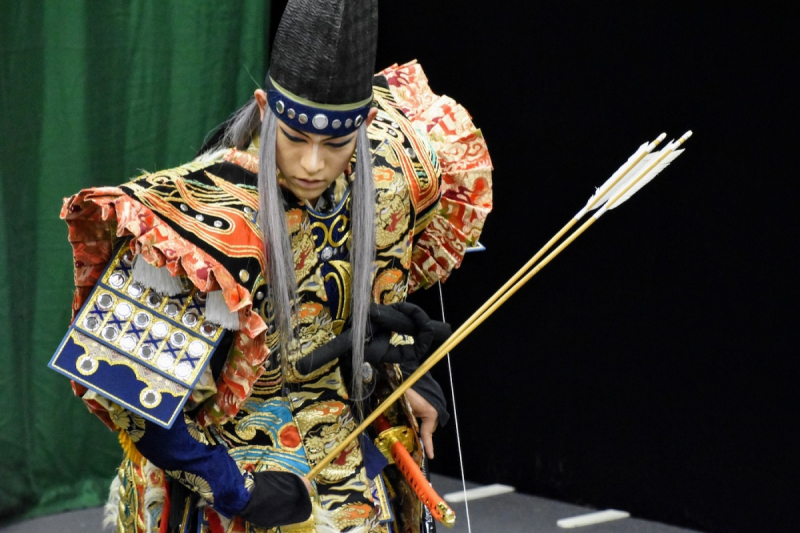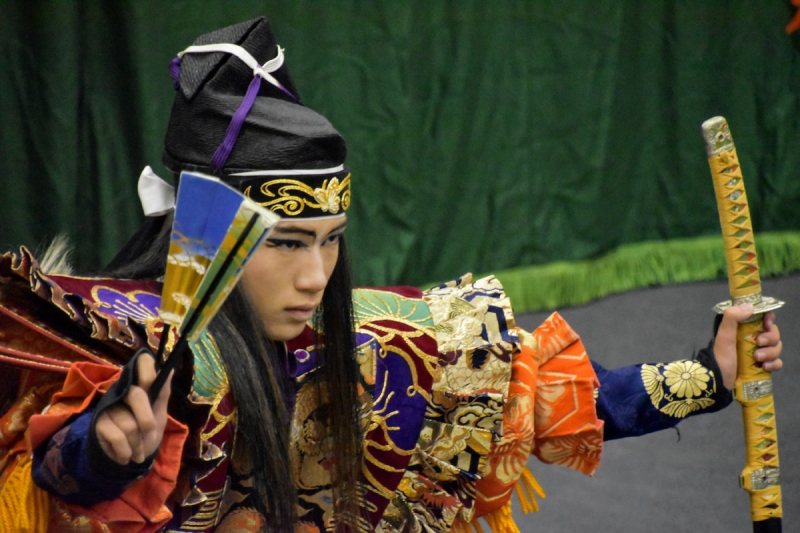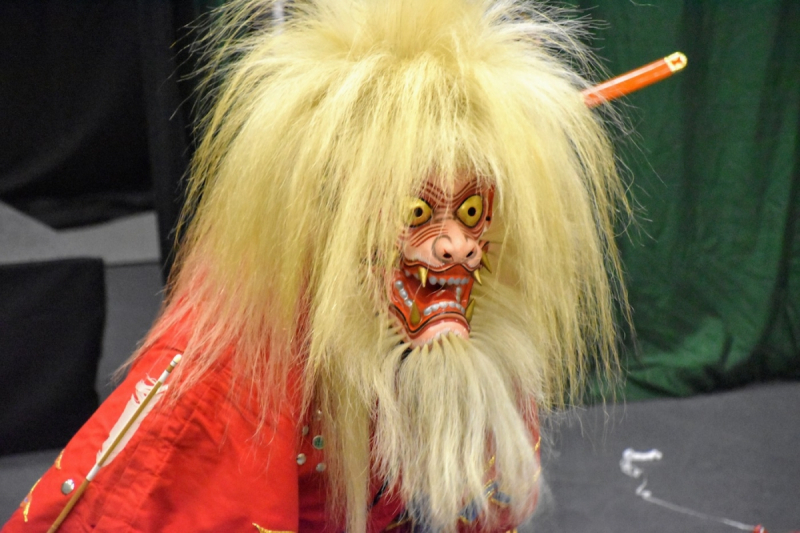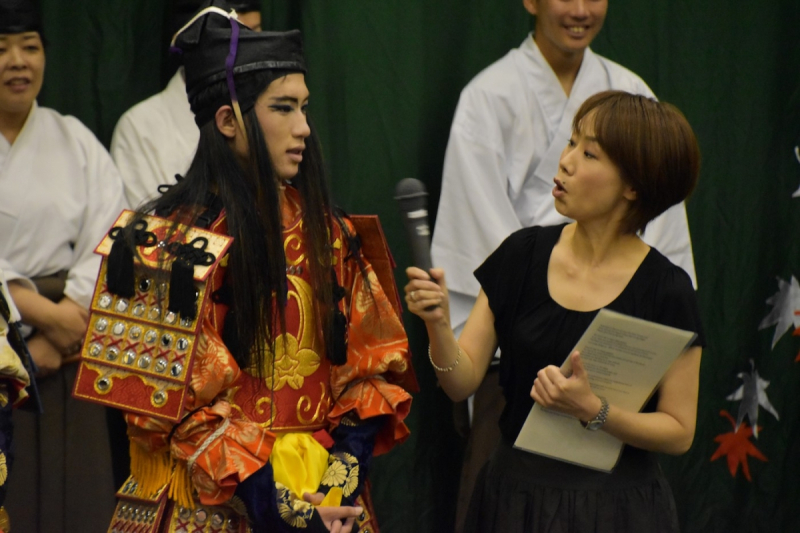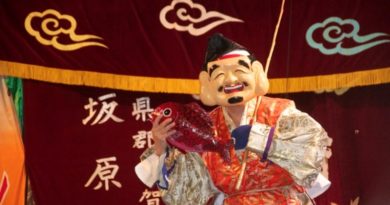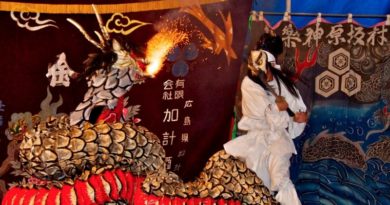An Evening of Kagura: The Tale of the Poet-Warrior General
The lively, colorful Japanese performing art of kagura is called traditional, but like so many artforms, the kagura currently making waves in Hiroshima is a combination of the old and the new. Although kagura is said to have spread throughout Japan alongside the proliferation of Shinto shrines, modern kagura’s glitzy costumes, and even many of the plays themselves, have come into being in the last 70 years. An Evening of Kagura helps bring this dynamic artform to visitors and foreign locals alike.
Performances are held in an intimate, although too-well-lit (the stage lights are currently broken), hall in the Hiroshima Prefectural Art Museum. An Evening of Kagura specifically targets an English-speaking audience: Along with a short introduction to kagura by the MC, the 45-minute performance includes a translation of the dialogue on a screen at one side of the stage. A question and answer session, facilitated by the MC and an interpreter, following the performance gives audience members the opportunity to gain an even greater understanding of the artform.
An Evening of Kagura’s wide repertoire of plays are put on by 16 rotating troupes. I attended “Minamoto no Yorimasa: The Tale of the Poet-Warrior General,” performed by the Suzuhari Kagura Troupe. Despite northern Hiroshima being known as the kagura hotspot of the prefecture, the Suzuhari Troupe, founded in 1951, hails from Hiroshima City’s Asakita Ward, just north of Kabe.
“Minamoto no Yorimasa,” although kagura-ified relatively recently, is based on a Japanese folktale set during the Heian period (794–1185). The story is as follows:
The Emperor had fallen ill, so ill he seemed as if possessed by a demon. The dark fog surrounding the imperial palace every night supported this diagnosis.
Master archer Minamoto no Yorimasa was charged with slaying the demon possessing the Emperor. Accompanied by his loyal retainer Inohayata, Yorimasa came face to face with the mysterious demon — a Nue. The Nue, which had the head of a monkey, the limbs of a tiger, and the tail of a snake, put up a fair fight, but it was eventually felled by Yorimasa’s arrows and Inohayata’s bone-cutting sword.
Back at the imperial court, the Emperor is making a quick recovery. Yorimasa is asked to compose a poem to celebrate the occasion and, in perfect tanka, he humbly states that his arrows “sometimes hit their mark.”
My heart was literally pounding during the performance, thanks to sitting directly in the taiko drum’s soundwave line of fire, as well as a nerve-wracking period when the performers’ feet managed to collect all the paper streamers that had previously been thrown in the Nue’s attacks. Luckily, both the warriors and demon extracted themselves without incident and without interrupting the choreography.
A moment when the Nue climbed on top of the taiko drum and jumped toward its foes, landing with a perfect somersault, was especially dramatic. Overall, the Nue, with its fearsome mask, gaping maw, and gravity-defying hair, was the star of the show. The two warriors, however, were not to be outdone: The performers’ physicality and energy made them completely look the part, whether their bodies were stretched in slow, deliberate movement or rapidly spinning as they battled the Nue.
Although some may imagine that today’s youth don’t have much interest in “traditional” performing arts, the Suzuhari Troupe is made up of people of all ages. A high school student performed as Inohayata, and one of the accompanying musicians was still in elementary school. A few members mentioned that they joined because they saw kagura performed at festivals and wanted in on the fun.
Although members of the Suzuhari Troupe are free to come and go, some have been performing with the group for decades. With perhaps Yorimasa-esque humility, the director said he was originally asked to help out during a time when the troupe was short-staffed. He stayed for 34 years.
Tickets to An Evening of Kagura are 1000 yen. Shows are held throughout the year, generally on Saturday, Sunday, or the occasional Monday. Doors open at 5:30 p.m. and the performance begins at 6. Reservations are not required.
If you want to see the Nue for yourself, this play can be seen once again on October 6.
Check out GetHiroshima’s previous coverage of An Evening of Kagura – English Kagura Experience here and here.


